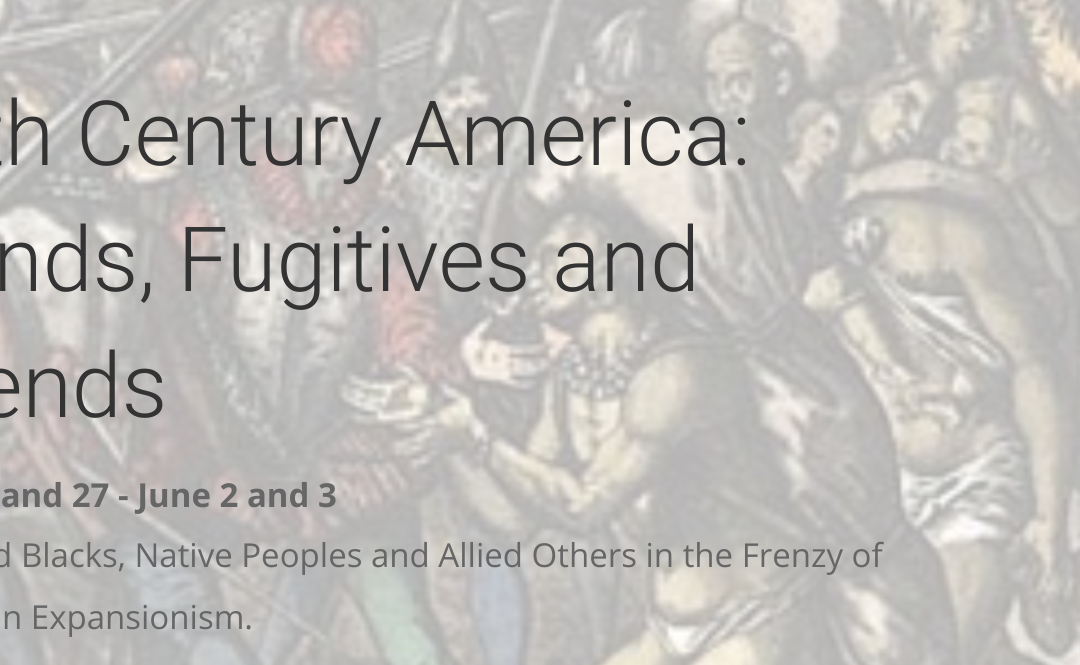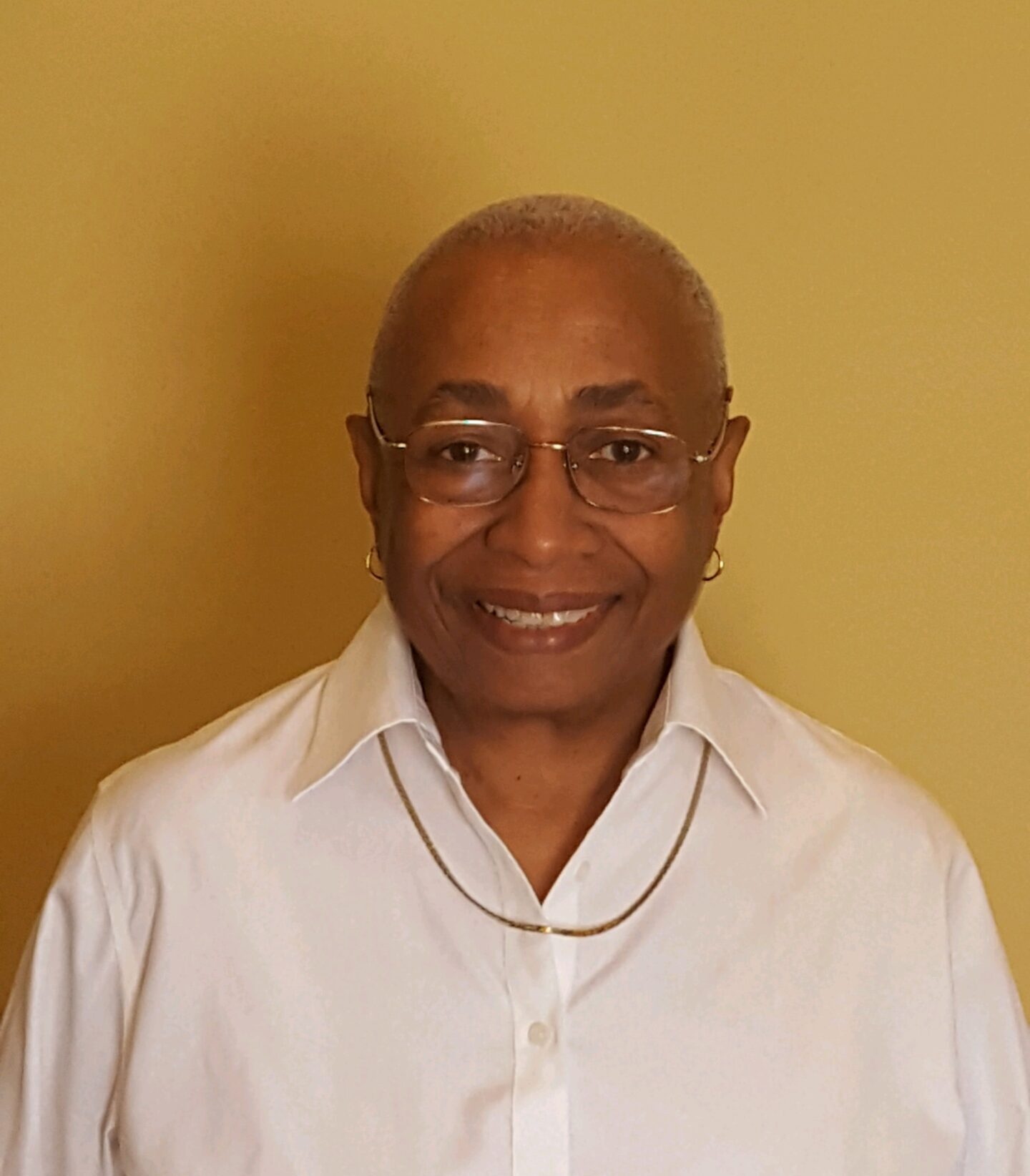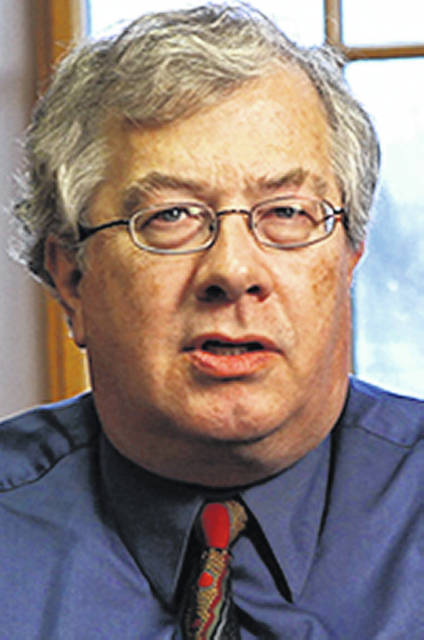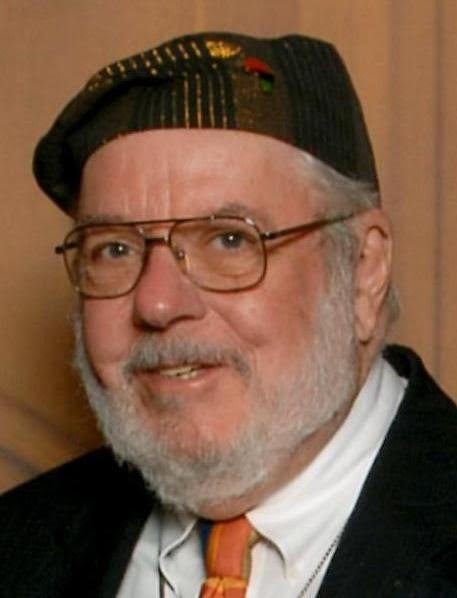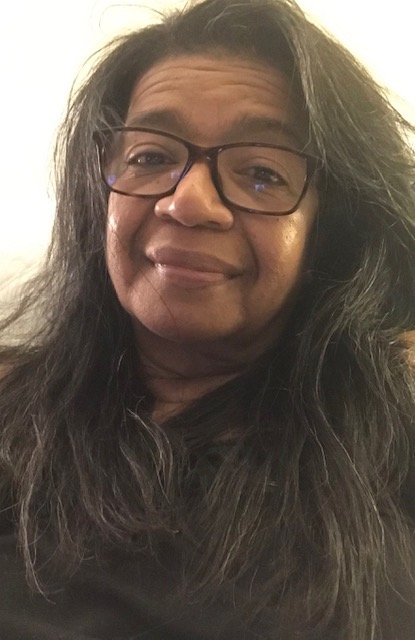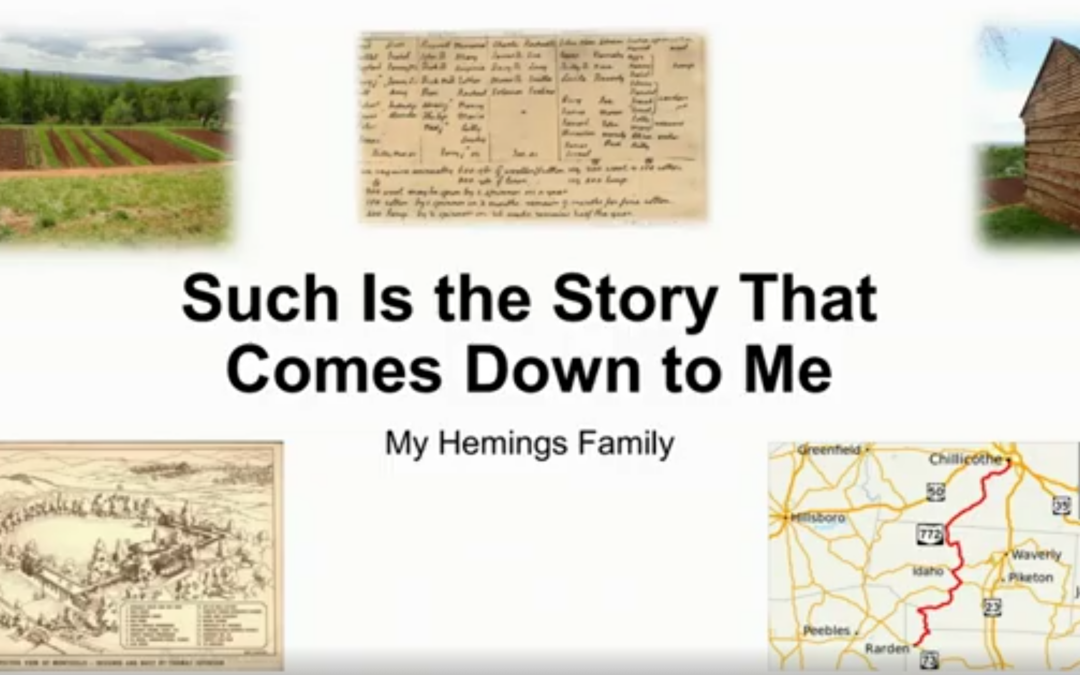By Lujira Cooper
Medgar Evers 1963 June CIVIL RIGHTS
John F. Kennedy 1963 November EXTERNAL CONFLICT
James Chaney 1964 June FREEDOM RIDER
Michael Goodman 1964 June FREEDOM RIDER Led to the Civil Rights Act of 1964
Andrew Schwerner 1964 June FREEDOM RIDER
Malcom X 1965 February INTERNAL CONFLICT
Martin Luther King Jr. 1968 April EXTERNAL CONFLICT
Robert F. Kennedy 1968 June EXTERNAL CONFLICT
Fred Hampton 1969 December EXTERNAL CONFLICT (FBI)
The 1960’s was a tumultuous and exciting time. People observed Flower Power, anti-Vietnam protests, the passage of the Civil Rights Act, and the Black Arts Movement against a backdrop of a slew of assassinations. The greatness of the decade was obliterated by the untimely, unnecessary and the unfortunate deaths those living in that time experienced.
In the decade of clamoring for civil rights death reared its racist head. In the decade of the Black Arts Movement to instill Black Pride with “Say it loud, I’m Black and I’m Proud,” voices were silenced. In the decade of fighting for voting rights, assassinations were the soup du jour.
Civil rights took a brutal hit in the 1960’s. Assassinations ruled this time some from internal conflict and others from external forces. Nine individuals died and seven of them (maybe all) due to civil rights activism. A charged time when Black people began to flex their power, however, Freedom Summer (1964) was not freedom to Chaney, Goodman and Schwerner. It led to their deaths or more appropriately murders.
In a time when Black people began to fight back because they as Fannie Lou Hamer said, “were sick and tired of being sick and tired.” Note: Lottie L. Joiner spoke of Hamer’s impassioned speech as a catalyst for the all-White male Southern Democrats to switch to Republican. A tsunami of blood flowed through this decade. It began with the death of Medgar Evers born in Decatur MS, a was murdered in Mound Bayou, MS., in front of his home. The murderers didn’t care he had small children who might have seen him killed. According to the NAACP, Evers fought in the Battle of Normandy but as we know that did nothing for him when he returned home. Later the University of Mississippi’s Law school rejected his application.
Before his assassination there had been several attempts on his life. A Molotov cocktail thrown and being nearly run over. His murderer, Byron De La Beckwith, three decades later was convicted. The killing spurred by investigation of the death of Emmitt Till (1955) and his vocal support of Clyde Kennard whose integration actions led to him being framed for robbery. Mickey Levine, past chairman of the American Veterans Committee, said of Evers, “No soldier in this field has fought more courageously, more heroically than Medgar Evers (NAACP).
Our next ghastly crime is the assassination of JFK. Basically, it’s a story no one knows the truth about. We do know Lee Harvey Oswald supposedly shot and killed JFK and then through some magic was killed by Jack Ruby while being transported from one jail to another. Questions still abound about this. Oswald’s death leaves many unanswered questions. Like why he wasn’t guarded better? How did a civilian get into the area and a host more? That’s two in 1963.
In 1964 the country faces the deaths of Freedom Riders Goodman, Schwerner and Chaney. The three stopped by Neshoba County Deputy Sheriff Cecil Price (aka KKK) for on a fabricated charge of a church are thrown into a jail cell. Price released them after seven hours then dropped off another deputy and raced to catch them before they got out of Philadelphia, MS. With the help of other KKK members shot to death and burned their bodies. With the help of an informant, the FBI arrested nineteen men for violating their civil rights. In 1967 nine were acquitted and seven found guilty including Price and KKK Imperial Wizard Bowers. Although hailed as milestone, since no one had ever been convicted of killing a civil rights worker, the judge, William Cox, an ardent segregationist sentence would be laughable if not tragic. He meted out time of three to ten years saying, “They killed one n*****, one Jew, and a white man. I gave them what I thought they deserved.” Question how serious did he take it if that was his comment? (seven guilty, nine acquitted and three deadlocked). The longest sentence came in 2005 when Edgar Ray Killen received a sentence of sixty years for three counts of manslaughter, (History.com). another note to this tragic story was it took three years of wrangling until the Supreme Court upheld the indictments.
The next chapter in this tragic saga is the death of Malcom X. who was killed in the Audubon ballroom in Harlem, NY. According to Josiah Bates of Time magazine, three people in 1966 were convicted for his death “Talmadge Hayer or Thomas Hagan (a.k.a Mujahid Abdul Halim), Norman Butler (a.k.a Muhammad Abdul Aziz) and Thomas Johnson (a.k.a Khalil Islam).” Why was Malcolm killed? Bates reports a few things led to his death, however his comment “chickens coming home to roost” regarding to JFK’s assassination led to a final break with the Nation of Islam (NOI). The question remains were the three following orders of Elijah Muhmmad, a mandate of the NYPD’s Bureau of Special Services (BOSS) or J. Edgar Hoover’s FBI since spies were very prevalent in Malcolm X’s breakaway organizations Muslim Mosque, Inc (MMI) and the Organization of Afro-American Unity (OAAU). Law enforcement perceived him as a threat to the social order. Hoover, according to Bates, said, “Do something about Malcolm X.”
Two intriguing factors may have contributed to his death. The first telling his security not to search for weapons. The reasoning was to get away from NOI’s image and the other more striking no police presence there. This is surprising since they always showed up. Bates further notes an intriguing comment about Malcolm’s death from Elijah Muhammad who claimed no involvement, “He got just what he deserved.” Wonder what he meant.
The next victim was Reverend Martin Luther King, Jr. who was assassinated on April 4, 1968, another day that goes down infamy. King had arrived in Tennessee in preparation to march with Memphis striking sanitation workers. An escaped prisoner, James Earl Ray, was the alleged assassin who eventually was sentenced to 99 years in prison since he confessed to the crime. King was shot with a 30.06 Remington rifle. King a man of peace had his life cut short because he spoke out against the injustices he saw.
Robert F. Kennedy as Attorney General pressured the FBI to investigate the deaths of Goodman, Cheney and Schwerner. Which culminated a trial where the segregationist, U.S. District Judge William Cox took the case seriously from fear of impeachment.
RFK along with his brother and later Lyndon Johnson got the Civil Rights Act passed. Ted Kennedy said of Robert’s funeral, he was, “a good and decent man, who saw wrong and tried to right it, saw suffering and tried to heal it, saw war and tried to stop it,” (History.com). Also of note was his travels to “Appalachia, the Mississippi Delta, migrant workers’ camps and urban ghettos to study the effects of poverty and made trips abroad to such places as apartheid-ruled South Africa to advocate for the advancement of human rights” (History.com). RFK was an outspoken opponent to Johnson’s escalation of the VietNam war. RFK sent troops to enforce a ruling that allowed James Meredith to enroll in the University of Mississippi. Sirhan Bishara Sirhan assassinated RFK allegedly because of he resented Senator’s Kennedy’s” support of the Six-Day War intervention in Israel the previous year,” (History.com).
Our final fatality of the decade is Fred Hampton. He was a charismatic leader allegedly betrayed by one of his own. Hampton led the Chicago arm of the Black Panthers. According to the Chicago-Sun Times, Hampton was “A young, gifted leader with a talent for organizing.” In high school he led a boycott of homecoming. In doing this it permitted black girls to compete for the coveted title. He also led the Inter-Racial Council to diffuse racial conflict at Proviso East High School (Chicago-Sun Times). Racism, capitalism, and police brutality were an anathema the Black Panthers who formed community alliances to defeat these isms. Now onto why he was hunted and killed. Bring in the same culprit who worked hard to discredit King, FBI Director Herbert Hoover who called them, the Black Panthers, “the greatest threat to the internal security of the country,” according to Curt Gentry’s “J. Edgar Hoover: The Man and His Secrets.” Hampton was betrayed by one of his own according to information allegedly by William O’Neal head of Security for the Black Panther party. Hoover’s fear of Hampton’s charisma and Chicago’s untamed and corrupt police force fought the idea of Black folks rising and with help of a “friend” silenced the voice of Hampton.
Each change creates a new normal.
References
“The Martin Luther King, Jr. Research and Education Institute” Stanford University
“Slain civil rights workers found.” August 1964. A&E Television Networks
https://www.history.com/this-day-in-history/slain-civil-rights-workers-found
Bates, Josiah 2020. “The Enduring Mystery of Malcolm X’s Assassination” Time
https://time.com/5778688/malcolm-x-assassination/
Cooper, Lujira. (2019). LGBTQ AGING IN A HETEROSEXUAL WORLD
Joiner, Lottie L. (2014). Remembering Civil Rights Heroine Fannie Lou Hamer: ‘I’m Sick and Tired of Being Sick and Tired’ Daily Beast
© 2021 Lujira J. Cooper
Who was this man? History, more often than not, is a narrative agreed upon. By whom, you ask? By those who are read, who chronicle the events, set the tone and determine the mission of those acts which being read in the now will perhaps impact the future. Those acts or events in the “then” period rely on general contemporary commentary — what was being said at the time. That is often the press — newspapers, magazines and published reports. Rising to the level to be viewed in those spaces is artful and require the wherewithal or permission — ownership, editors and the like. However, some events do not ask or need permission.
When extolling the lives of the men and women who laid the foundation of what we consider to be a democratic America — however fledging it might be — we most often count the winners. We rarely look at those whose expressions and acts that antecede other acts of unquestionable importance and impact.
Today, we have a brief look at John Brown, a man of spirit and conviction who did not win anything. In fact, we will see that his life in many ways is a collection of failures. If you measure “wins” materially, John Brown is not your man. I would venture that one shouldn’t use a single yardstick to measure any one thing. That is too simplistic and unsophisticated as a measurement in this complex world; one has to use multiple weights. In determining the worth — in the re-phrasing Jefferson’s use of the word, “worthiness” of the man — John Brown is indeed worthy of joining the pantheon of American movers and shakers who have made it on to the pages we read when we are trying to figure out how did we get here from there.
We attribute to these types of men — basically, as far as the regular texts go — being of unswerving determination and conviction. John Brown was certainly a man chasing not only the devils of the American economic system, he envisioned a new America where barbarity did not determine the economic foundations by which the many toiled while others wined and danced seemingly in oblivion. And, don’t we all!
Failures are not the final mark of a man or woman, for we learn more from failures than we do from successes as we try to sort out our lives. The winning is not in repeating the same steps that contributed to the failure, if one has a chance to assess and recalibrate before another advance. Historically, we have an opportunity to determine the value of the quest, the ardor of the mission and courage in the face adversity — even against insurmountable odds — even death. This is the blood of the patriots that Jefferson so sanguinely mentioned as the necessary blood nourishment for the tree of liberty. This, of course, should be guided by principles, values of the dreamed of whole-state.
The wholeness vision of the of the country shifts in every generation. History will speak for itself, but progressives are hopeful that in this generation, it is shifting towards the better angels of the Constitution and the oratorical splendor of the Declaration of Independence. The hope that these documents are not just the rhetorical learnings of school children; that at some point, this country exhibits a national state ruled by learned intelligence with humanistic thinking and a generosity of spirit.
Truly the hand that rocks the cradle rocks the world. John Brown was born into a religious family that hated slavery unequivocally. A Calvinist, and one of four children when his parents moved from Torrington, Connecticut to the wilds of the Western Reserve in Ohio; he was 5 years old. Later there would be four other siblings born. In Ohio, his father’s house was part of the Underground Railroad and as a family they participated in abolitionist activities where they lived.
The Western Reserve was a huge territory (6,000 square miles) in Northern Ohio, new to Europeans who were spilling over from the East Coast as a result of the aftermath of the American Revolution. This was new land and it potentially presented new possibilities for a livelihood, a new beginning. John Brown’s ease of fraternization with the indigenous populations as a child is duly noted. His father worked in leather as a tanner. In the 19th century, it was a stinking, bloody trade and one that John Brown was not taken to for his own livelihood. Married at 19, he sired about 20 children from two successive wives. It sounds like a large number, but in those days people tended to have large families. Of the 20, only 11 lived to adulthood. He appeared devoted to his religious views and to his family.
Early, John Brown wanted to enter the ministry but that was not to be. Earnestly, he tried to find viable means to support his family: tannery, surveyorship, and as wool merchant, all of which basically came to nought although the latter was not as much of a fiasco as some writers had thought. John Brown was not alone in the shifting economic instability of the period as bank runs, foreclosures and drops in the value of commodities in international trade made economic circumstances fragile. Many directly bore witness to the lending and banking structures wreaking havoc on the economies of small farmers as merchants, in their quest to gain and hold profits, put all marginal businesses at even higher risk.
I found it interesting that in his high times and low, Brown constantly thought about other people and their needs. He prayed for and with them and shared what he could. He was a man of generous spirit, if bitterly limited means. As a boy, he had seen the viciousness of slavery. At 12 he witnessed a child being beaten in the streets while he travelled through Michigan. He had no illusions about the system. He quietly lived among Black people as he had among native peoples as a youngster. He used his skills to help them whenever and however he could. He shared meals and always put a handle on addressing them as Mister or Mrs. He denounced segregated seating in churches. But he wasn’t on fire yet.
Let’s look at mid-19th century America. Life was hard and for those who were not owners of any kind, it was especially so. John Brown thought that poor whites would see the common threads of their lives with the enslaved and join in the fight for a new day. That was not to be. Racism as a psycho-delusional drug was planted too deeply in the psyche of most whites — even poor whites who had little or nothing in common with the wealthy. But nothing of significance would come of that thread.
Free labor in the South was directly tied to the machinery of slavery. Free labor in the North had a broader application, but most people who were not farming were tied to the emerging industrial systems which included burgeoning factories and mill towns. North or South, trade was the grist for the economic mill. Those who were nearer the controlling mechanisms in either region were those whose wealth clearly separated them from the vast number of the toiling population.
Over the 246 years to the brink of the Civil War, the economics of the post-revolutionary United States expanded and contracted based on matters of international trade, primarily with that of England and France. And, in that regard, the system of slavery was directly affected as landowners in the South with established plantations drove agriculture as their primary means of trade. Cotton, sugar, tobacco were the cash crops. And, in this agricultural period, the focus was on the importation of textiles, and finished products, wines and liquors. The management of money including capital investments to facilitate the engines of trade was in the North and with London investment and banking houses. Clearly, early European inhabitants had a decided advantage over the waves of incoming immigrants for jobs and for land.
Again, the economics of the mid-19th century were precarious at best for most people. Even wealthy men could suddenly be left penniless and subject to auction to satisfy creditors. This was not an infrequent occurrence. However, small farmers and merchants were more likely to fail because they did not get the news of changes immediately — it was some six weeks in transit from Europe to these shores. But, at least those with material wealth could get the news first hand, while the smaller owners and those in more remote areas would be among the last to know — almost always too late to re-structure or sell short to establish a new cash flow.
Many people preferred to work for someone rather than take the risks they could see all around them. Not John Brown, he was an independent thinking man. He would not subject himself too long or too hard under another man. Over and over, he attempted to strike out on his own to establish his own grubstake, or farm or import house. However, nothing worked for long. Banks foreclosing, crop failures, loans called in by British and other investment houses, drops in trade — all of these economic cyclones were part of the mid-19th century economy.
That the country was agricultural meant that most people were tied to the lifestyles required or provided by the kind of farming they did. There were very few cities and all of them were mostly the outgrowth of river communities near the ocean from which there was heavy international trading. Mercantilism where raw materials were supplied and finished goods were returned was a persistent issue, but slowly it was being altered — primarily in the North as small scale mills and manufacturing emerged as a new economic means of production. Northern life, outside of few large commercial centers in Rhode Island, New York and Pennsylvania, was the land of small-scale independent farmers.
On the other hand, life in the planter South did not shift with the exception of the wide-spread use of the cotton gin which upped the profits of growers, if they could guarantee significant harvests. Large-scale farming I am speaking of — plantations — were developed along the Southeastern coast for a variety of reasons: chief among them being the fertility of the soil for a variety of lucrative export crops, access to direct traders and to the importation of slaves. Jamestown, Charleston, Mobile and Savannah to which New Orleans was added — after that annexation by Thomas Jefferson for a cash strapped Napoleon waging his wars — are examples of rich centers of trade of all kinds, humans and produce.
As formerly indentured whites and newcomers scratched for a living in the South and North, there were trickles of migration over the hills and mountains of the East into the valleys beyond. That spillage was intermittent, until it was sparked in 1848 (1848-1855) by the finding of gold “in them thar hills,” and the ’49’ers, as they were called, flooded from the East to the West Coast, bringing all manner of mayhem and doom of native peoples across the plains and the coast. About $2 billion dollars worth of gold was extracted before it was all said and done. To this day, California is still paying for some of the environmental devastations caused by the gold rush and the contamination of its water systems in the runoffs.
The wild and woolly manner of westward migration largely of marauding men gave the western expansion the legacy of lawlessness. But that is not our story today. What is useful to us, however is acknowledging that of hordes of unattached men with blazing guns, with alcohol and bad temperaments moved into areas previously unknown to Europeans by the tens of thousands and were a law unto themselves. This exacerbated the arguments in and on territories joining the Union.
New and old immigrants poured into lands still held by Native Peoples. There was armed conflict to be sure, but the Europeans’ greater numbers, fire-power, but most importantly their ability to withstand epidemics of communicable diseases made those incursions into the new lands inevitable and over time permanent. Wherever the Europeans went, slavery was perpetuated and firmly held.
European settlers westward wanted representation in the East in Congress. This pushed the issue of slavery on the heels of this expansionism. The national discussion as put forth by potential states — were they to come into the Union as slave or free states? This national conversation was becoming frenzied, with the territories Kansas and Nebraska making the case.
Before going on to John Brown’s curtain call in Kansas and Virginia, let us consider the other factors in and around John Brown: In 1833, Elijah Lovejoy was murdered. He had been an abolitionist of note and a journalist; he was a Presbyterian minister as well. He was killed by a pro-slavery mob in Alton, Illinois. When thirty-three year old John Brown received word of his death, he said” Here before God and in the presence of these witnesses, from this time, I consecrate my life to the destruction of slavery.” And, he did.
Then there was also these:
- The financial depression from 1839 – 1843
- Panic of 1857 (recovery began in 1859) and
- The loss of SS Central America with $1.5 million in gold (to provide backing for banks with financial runs) — it was lost at sea
- The Kansas – Nebraska Act of 1850 – another tenuous compromise trying to resolve the free state/slave state issue. Opened all new territories to slavery based on popular sovereignty. Judge Taney of the U.S. Supreme Court in the same order also ruled that the Missouri
Compromise was unconstitutional. It was now open season on slavery and the public outrage in the North was palpable. In Kansas and Nebraska, it would be battled out.
- Fugitive Slave Law of 1850 – The omnibus Fugitive Slave Law which covers all states and territories; all runaways are to be captured and returned to their owners. Anyone convicted of helping can be find $500 ($14,572.49 in 2015 dollars) for each slave for which aid of any kind was rendered. These are increasingly desperate times. Slave catchers visibly moved North snatching any and all Blacks they suspected as runaways whether they were or not. This nationalized slavery since slaves could be carried to any part of the country whether free or slave state, if it was the will of the owner.
- 1857 Dred Scott decision: again, Judge Taney wrote the final majority opinion in Dred Scott v. Sanford, which said that all people of African descent, free or slave, were not United States citizens and therefore had no right to sue in federal court. In addition, he wrote that the Fifth Amendment protected slave owner rights because slaves were their legal property.
There may be other issues, but I will stop with these. So now we have come to Kansas and its immediate precursors. While John Brown was trying his hand at an early form of a producers’ collective with small growers, working as a cooperative in the wool business and seeking basically fair market trade with British manufacturers — a business that, too failed — he was introduced to well established abolitionists and various likeminded groups around in the city of Springfield, Massachusetts. This first time was 1846 or there about. However, John Brown would return to the town a number of times. It was, after all, a place for the sharing of thoughts and the promise of compatriot workings. Some years later, at a meeting on January 15, 1851, John Brown gathered with members of Springfield’s Black community and organized the Springfield Branch of the U.S. League of Gileadites. The Gileadites took their name from the Biblical Mount Gilead, where Gideon led the Israelites to freedom. We would hear this name evoked at trial. Clearly, John Brown was actively recruiting for some future work.
Before some of the even more defining events in his life, John Brown moved his family to North Elba, New York, on land bought by Gerrit Smith, an abolitionist, for the expressed use by Blacks to stabilize themselves and acquire skills in order to be independent “and self-actualized.” John Brown established his own farm and worked as a leader in that small community. From North Elba, he moved runaways into Canada as frequently as resources would allow.
John Brown met Frederick Douglass in Springfield, Massachusetts. Douglass would later lament that he hadn’t the courage do what needed to be done like John Brown. Where Douglass fell on the spectrum of abolitionist thought is speculative. His orations are clear, but his strategies were not.
There is strong speculation that Frederick Douglass was supposed to join in the Harper’s Ferry assault somehow, but at the last stood back away from its execution. Perhaps he felt its was doomed and wanted no active or central part in it. Nonetheless, his association with Brown was well known. He continued to revere Brown as a person of great repute both during his life and after his death. Nonetheless, Douglass was outside of and more radical than Garrison, a pacifist, regarding radical physical action, but ultimately to the right of John Brown who obviously did not eschew the potential of physical responses to the anathema of slavery. Douglass believed that the Constitution was good document, but badly administered; it needed to be righted and updated to be inclusionary. Garrison believed that America’s institutions were calcified and could not be transformed therefore, old ones would have to go and new ones would have to be created. John Brown wrote his own constitution.
We will leave that conversation and those arguments there. However, you should know that Douglass at some point had been made aware of the plan that Brown was incubating regarding Harper’s Ferry and he probably knew about it for about 10 years. And, there were others. . . . Brown earnestly wanted others to join in a general conflagration to overthrow the slavocracy, to start the country afresh. After Harper’s Ferry, Garrison is quoted as saying, “Success to every slave insurrection [in] the South, and in every slave country.”
Let’s take a step back to 1849, when Kansas was beginning its political bleeding, “Bleeding Kansas.” I believe that I have spoken on why that came about, but you might want to know how it did so. Under the Fugitive Slave Law of 1850, whites were basically “at war” with Blacks nationally. From anywhere, for any reason, free or enslaved, Blacks were attacked and if they survived, they were turned over to slave catchers who pervaded the North and points west. Given the punitive means in the law for anyone who helped slaves, this was another turning point for John Brown and others of like mind.
Then there was the crafty idea of popular sovereignty as a response to the slave or free state argument. It grew out of the annexation of Texas in 1846. In Kansas and Nebraska the idea of it was to determine their status as a territory, slave or free. From Missouri, especially, what were called border ruffians emerged. In John Browns’s own words these were, “the meanest and most desperate of men, armed to the teeth with revolvers, Bowie knives, rifle and cannon, while they are not thoroughly organized, . . . [they are] under pay from slaveholders.” They flooded into Kansas. Abolitionists headed west to Kansas. Brown and his five sons packed up their gear, left their homes and headed to Kansas, too, “To help defeat Satan and his legions.’’ The fight was on! It was the spring of 1855.
So now we are in Kansas. Loaded with guns and ammunition, Brown settled his group in the territory moving finally to Osawatomie, a small town on or near two streams, the Osage and the Potawatomie, near his half sister and her husband, Samuel and Florella Adair. With his natural flair and affinity for people, along his unfailing commitment to do what he could to free the slaves, speaking and organizing, John Brown soon became a local abolitionist leader. This area was known to support “Free Staters.” Along with way, he picked up the “street name,” Osawatomie Brown.
His reputation going before him, upon his entry into Kansas, he was welcomed with the burning of Lawrence, Kansas in May (21) by pro-slavery ruffians. With his moxie and their issue, it wouldn’t be long before the two forces would find each other on other fronts.
Retaliation by Brown came on August 13, 1856. A reverend White’s house was attacked and property taken after which the reverend called on and received militia support from the governor.
On August 30, 1856, some 250 – 400 pro-slavery Border Ruffians led by John W. Reid, attacked Osawatomie, Kansas. A defense was mounted by John Brown with just 50-odd men, but they had to pull back. The town of Osawatomie was looted and then burned to the ground. In subsequent the back and forth of events, John Brown’s son, Frederick was killed and more Free-Staters died. The ruffians then headed towards Topeka, burning and looting their way.
John Brown emerged from the Kansas fighting with an enhanced reputation as a fighter. This may have fueled his fervor to attempt fighting at Harper’s Ferry. There would be more skirmishes to fight in the years leading up to Brown’s main event. There would be intermittent violence in Kansas up through the Civil War.
Now we have come to Virginia. In the early morning hours of October 16, 1859, John Brown led 3 of his sons and 19 other men onto the United States Armory and Arsenal at Harper’s Ferry, Virginia (now West Virginia). He wasn’t mad or crazy. He was calm under fire and cool headed as the leader. He thought that once people saw that they could assail the military machinery, there would be a rallying cry to throw off slavery of all kinds. He had hoped that poor whites would see the light, too. To get rid of slavery would require a mass insurrection — about that there was no question. This attack he ventured could and would shake he slavocracy. And, it did, but he would not live to see it.
Poorly provisioned and vastly outnumbered, John Brown and his men held the U.S. military response (rumored between 500 and 800 men) at bay for 2 days. All kinds of miscalculations occurred. No whites would rally to the cause nor did any local Blacks. Frightened slaves who had little or no idea what was underfoot withdrew further away, on and on. Brown would ironically surrender to Colonel Robert E. Lee and Lieutenant J.E.B. Stuart on the 19th of October. Ten of his 19 men were killed which included 2 of his sons.
There is a long story told by Owen Brown, a son who was near but not at Harper’s Ferry. He was one of several of the men who were able to escape Harper’s Ferry’s finalities heading North to Quaker abolitionists. The Blacks had their deaths — barbaric — and the whites were hung. The end, even for those who escaped, was a bleak and hard scrabble 19th century life. With, perhaps, one exception, not one of John Brown’s men ever wavered in their conviction and service to the end. Stout-hearted men with the backing and support of their women. Dangerous times. Dangerous acts.
Now for the legacy of men who laid down their lives so that the slaves could stand up. This is no way diminishes the work and struggles of the slaves themselves but here it is.
With the name of John Brown obscured, demonized, few would be encouraged to push and shove for relief of slaves. He was the only one we know of who took to the active fight, one in over 240 years of slavery to that date. The narrative implied that this was radical work, that this was not to be encouraged or condoned. People then would side-step or avoid what William Loren Katz called “A White Role Model.” Brown’s impact and value would be muted or obliterated.
Today, I am proud to call this man, John Brown, my brother. Martyr. Hero. Soldier in the army of true Christian ideals. A humanist. For those who have never fought in any struggle, they will never know the toll of a small effort. For those who think that all Americans rested easily during the long period of slavery, they can NEVER appreciate the exertion, the sacrifices made for however meager the outcomes. For in life, in the Struggle, there is no dollar for dollar match, no punch for punch equality. There is no guarantee of winning, there is only the guarantee that the Struggle continues in every generation, in every manner. John Brown saw and John Brown acted. Catalytically, his efforts shocked the country, North and South. The reverberations continued and as you are keenly aware, and as John Brown stated to his executioner, (December 2, 1859) “I, John Brown, am now quite certain that the crimes of this guilty land can never be purged away but with blood.”
Last words: The study of Black Life in the United States is relatively new. Handling the narrative is crucial as the racism of those who print would demean, ignore or denigrate the lives of slaves, free men, their progeny and allies. They would separate what is common by class and subvert it to racial proclivities and stereotypes. I see it everyday. Without the control of the narrative, never would there an identification of European men of means and statue who spoke openly and forthrightly for the freeing of slaves early on. Never would we know of the Marquis de Lafayette. This French aristocrat, who enabled the decisive victory of the combined American and French troops at Yorktown, VA, ending the Revolutionary War, who argued vigorously with George Washington, Jefferson and others for the freeing of the slaves. Why was the battle for freedom fought, if not to free all who were not free?
Nor would we know in that in that same American Revolution timeframe that Andrew Thaddeus Bonaventure Kosciuszko, the Polish Lithuanian military engineer, and national hero in Poland — celebrated in two other countries as well as this one, a principal developer of West Point during and after that war — that he, too, argued for the release of the slaves. Importantly, we would never know that he set aside his American funds for the freeing and education of Thomas Jefferson’s own slaves. It was never done and more than once Thomas came up short on this question, but that’s another story.
My point here is that had Black children and white children heard that there were strong voices of dissent to this horrible system, it would have given not only hope, it would have, perhaps, been inspirational. It would have given more people hope in challenging the system, to come from underground however and whenever they could. While I have no doubt that it would have remained so total in its exploitation or so horrendous in its application, it might not have lasted so long.
You have some details in your hands about slavery. You have no lack of information today because I have provided you with particulars which helped to shape John Brown’s thinking. His last words before the court were as follows: (October 16,1859) I believe that to have interfered as I have done as I have always freely admitted I have done [o]n behalf of His despised poor, was not wrong, but right. Now, if it is deemed necessary that I should forfeit my life for the furtherance of the ends of justice, and mingle my blood further with the blood of my children and with the blood of millions in this slave country whose rights are disregarded by wicked, cruel, and unjust enactments, I submit; so let it be done! After Brown’s execution, the great abolitionist Frederick Douglass said of him, “If John Brown did not end the war that ended slavery, he did at least begin the war that ended slavery. . . . Until this blow was struck, the prospect for freedom was dim, shadowy and uncertain. The irrepressible conflict was one of words, votes and compromises. When John Brown stretched forth his arm, the sky was cleared. The time for compromises was gone—the armed hosts of freedom stood face to face over the chasm of a broken Union—and the clash of arms was at hand. The South staked all upon getting possession of the Federal Government, and failing to do that, drew the sword of rebellion and thus made her own, and not Brown’s, the lost cause of the century.”
We thank you, John Brown.



